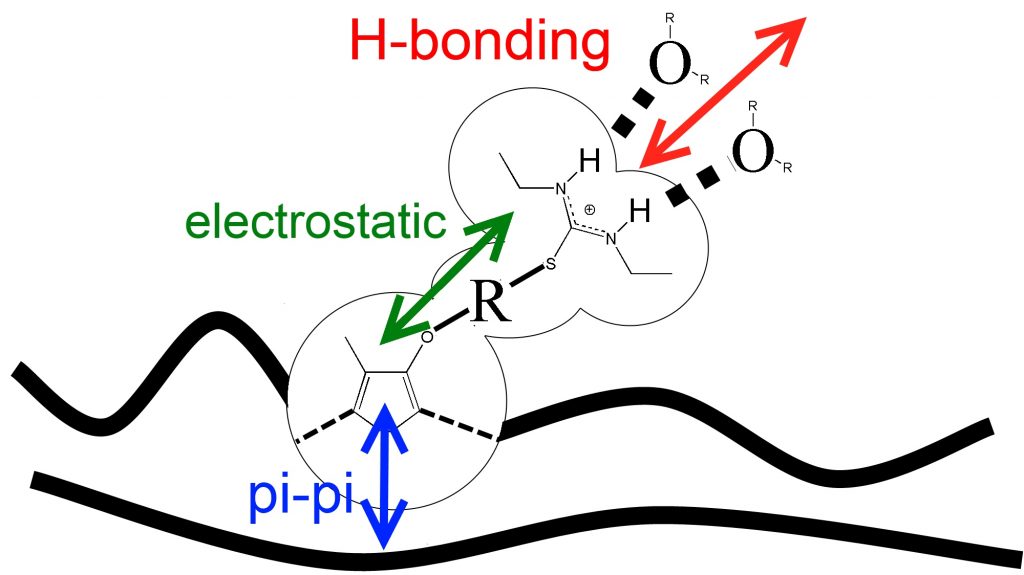Conjugated polyelectrolytes (CPEs) are conjugated polymers (organic molecules with a base structure of alternating single and double/triple bonds) functionalized with ionic groups (cationic or anionic), giving CPEs solubility in polar solvents (e.g., water) while keeping the delocalized electronic structure typical of conjugated polymers.
CPEs have then particular optical and semiconducting properties in solution and solid state, and such properties can be tuned by molecular-structure and media.
CPEs are useful to perform structure-function studies of interaction forces either alone or using different quenchers.


CPEs are solution-processable, allowing their use for industrial-scale production of different surfaces and devices, using for example, layer-by-layer assembly or roll-to-roll printing. Both cationic and anionic CPEs also possess interesting surface-electronic properties (which are not yet well understood), the reason why their use as selective layers in electronic and optoelectronic organic devices is a current frontier research field.
Computational chemistry allows gaining supplementary information about CPEs, such as energy levels and electrostatic potential surfaces.